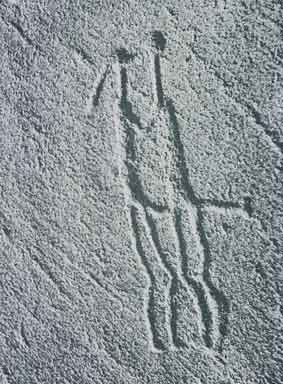Ogres, animal-people, savages, gods who are beastly in shape and substance – the Wild Man appears in various guises around the world. He represents uncontrollable forces, both social and natural. He is darkness, slime, sin and shadow. In contemporary Western culture, he is homosexual.

Sweden: sacred rock carving of two men fucking, early 1st millennium
In England the Cerne Abbas Giant, carved into the chalk hills in ancient times, has a mighty erection and a club. He is an image of dangerous forces – nature, the unconscious, sexual energy. Enkidu is a hairy wild man who sucks the milk of animals. When the gods send him to Gilgamesh, the king forsakes all wealth and power to live with his beloved Enkidu in the wilderness.
Through this archetype, we can see how homophobia is interwoven with both racism and the culture of nature. When we embrace this symbol, we move to integrate the wildness that contemporary culture would prefer to pillage. We admit the darkness and allow the savagery that racism projects onto an other. Queer in this sense leads us to deep resources and dangerous meanings.
Shadow: Advancing the claim that homosexuals are the same as everyone else, queer activists may be tempted to refuse and deny the symbolic association of homosexuality with wildness, darkness and savagery. In a mirror image, anti-racist activists may be tempted to refuse and deny the symbolic association of racialized others with wildness and queer sexuality. Homophobia in racialized communities becomes part of an anti-imperialist effort to resist racial stereotyping. Queer people of colour are multiply excluded and disavowed. GLBTQ people who identify as “white” and fail to critique race and whiteness, instead become obedient consumers and producers of white racial supremacy.
Related Figures and Attributes: Stranger, Witch, Exotic, Depraved
For more writing on this symbol, see these chapters of Orientation: Mapping Queer Meanings: Wildness, Slime, Darkness, Conclusion


